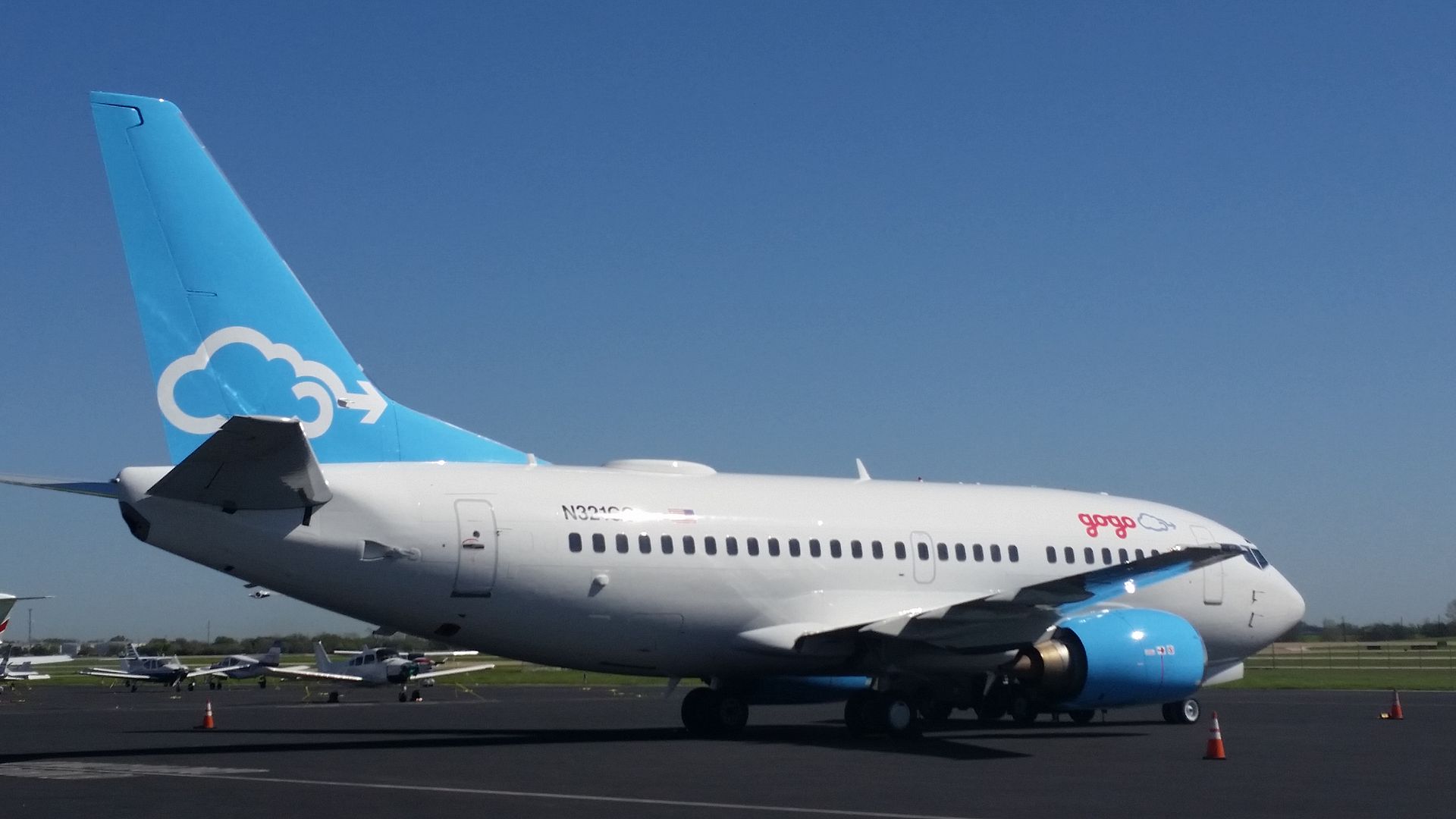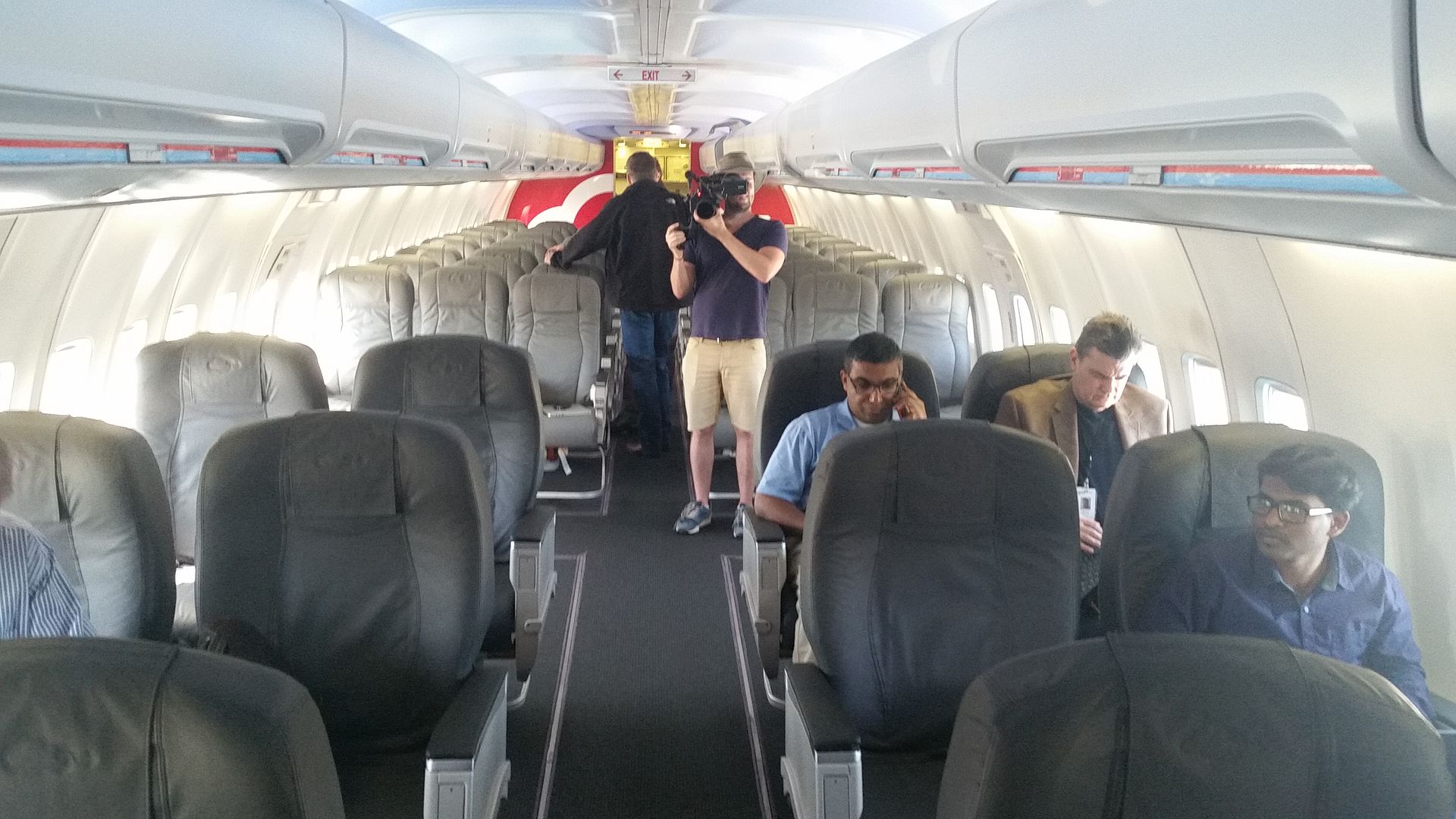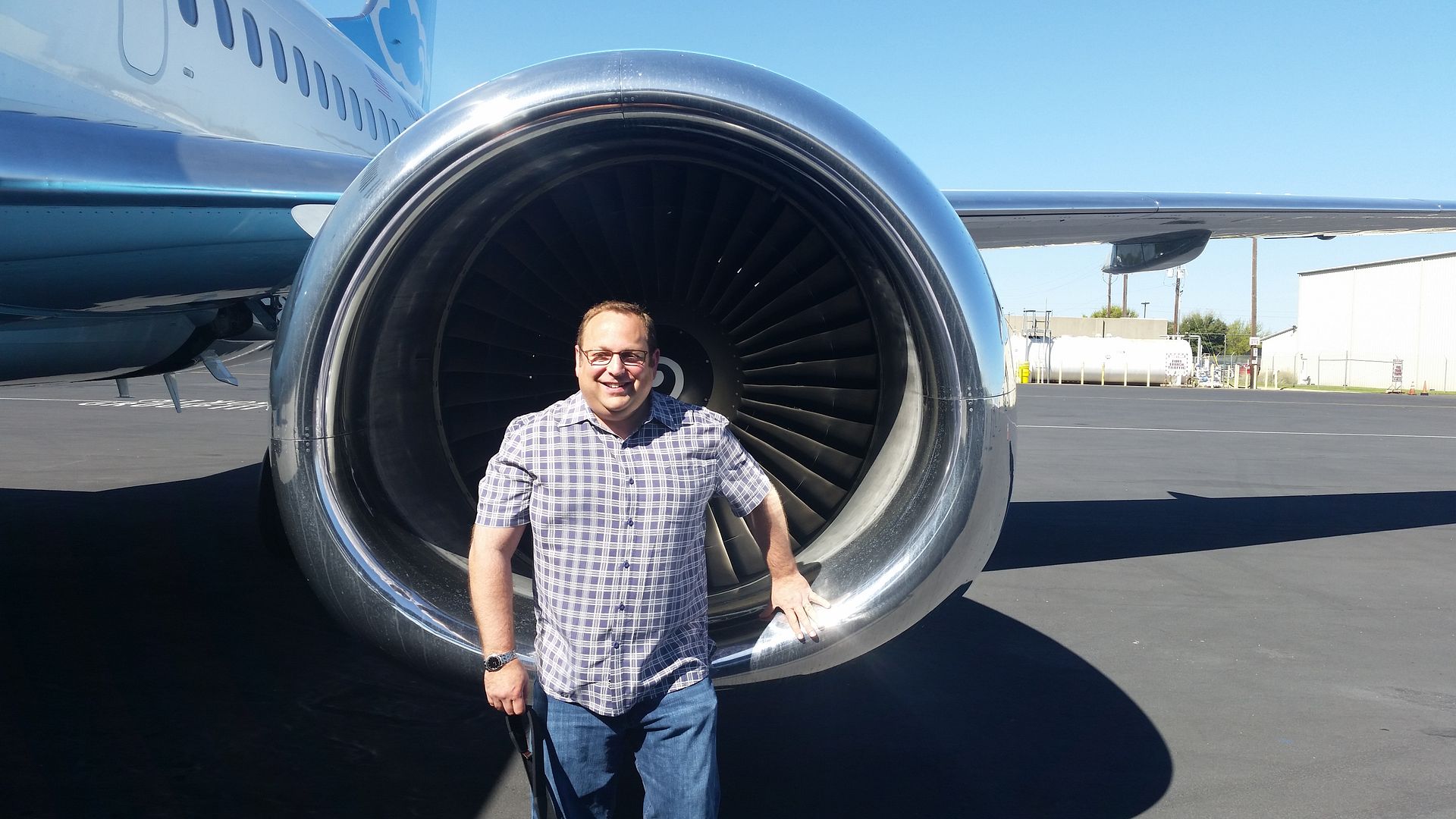Like Zach Honig I flew gogo’s Boeing 737 test plane on Monday. I had flown the aircraft to test their new satellite internet speeds back in November, but since I was home in Austin and they were in town for Southby I made my way to the airport for a 90 minute flight with a few other bloggers and journalists.



Here’s the evolution of Gogo’s inflight internet speeds:
- The older air to ground installations offer 3-4 Mbps to the aircraft, to be shared across all users and devices.
- The newer (ATG4) air to ground installations offer 10 Mbps to the aircraft
- Current satellite internet provides 70 Mbps to the aircraft, but the modem only supports ~ 25 Mbps
- Within a few months Gogo will start installing new modems capable of 400 Mbps. The aircraft won’t get that sort of speed, but it means the modem won’t be a constraint and that speeds can grow as Gogo does new satellite deals and expands bandwidth.
- Initial installs of 2Ku satellite internet will get the old modem, but those will be swapped out for new modems.
We had 51 devices connected on our flight which is 3 times as many on a typical flight and which matches or exceeds the highest volume use flights like San Francisco – Boston. And there was really no latency to speak of, I was using the internet like I was on a typical wifi connection on the ground.

To know that they’ll be nearly tripling bandwidth beyond that in the coming months is huge. Of course the experience will differ across airlines, which may throttle use since bandwidth isn’t cheap. Gogo described our experience as ‘production mode’ meaning that unlike my November test flight this time they were limited upload speeds which means you couldn’t use applications like Periscope. Airlines request these limits to prevent customers from videoconferencing inflight.
In addition to fast internet, the flight offered two channels of live TV as well. Gogo broadcasts from the ground to the plane. You don’t have each passenger pulling data for the live TV feed. Once it’s in the plane every passenger can access it without taking up additional bandwidth.
The number of television stations offered will vary from airline to airline. So far only Gol has publicly committed to Gogo’s TV offering, though channel details aren’t yet released.

The largest orders have come from airlines linked with Delta — Aeromexico Virgin Atlantic, Gol, and Delta all have substantial orders. There are smaller orders from United (for its ps fleet), Air Canada, and JAL. Delta will have some planes equipped in 2016
The order book is apparently about 850 planes, with a Chinese company signing on for 50 this week that will go to Hainan Airlines and Beijing Capital Airlines.
Apparently the time to installation is less about availability of the product or staff to perform the installation but that a typical install takes 3 to 4 days, requiring the aircraft to be out of service, compared to the older ‘air to ground’ installations which can be done overnight.
Zach notes that Gogo’s 737 should be going on tour soon and you can sign up for a chance to test fast satellite onboard internet.
Disclosure: Usually when you disclose financial relationships, it’s because you’re the one getting paid. That’s not the case here. Rather, I pay ~ $50 every month to Gogo for the American Airlines unlimited plan. Because even when it’s slower than I’d like on an early generation install on one of American’s MD80 it’s still internet in the sky and it makes my life that much more productive.


Only 50 active devices is low. Especially for a transcon.
@Wandering Aramean – average uptake is about 7%, right? On a narrowbody with 170 seats that’s 12 devices. You’ve got to up the usage to 30%, which does happen on some longer flights especially in tech heavy markets like Virgin America’s San Francisco – Boston flights for instance. But it’s not accurate to say “only 50 active devices is low.” It would be more accurate to say “50 devices isn’t the most you’ll ever see on a flight.”
I too was surprised by that 50 devices figure. During BOS-SFO only 1/3 of the people are online? When many of their companies will pay for accounts, or for $16 you can buy a prepaid pass? I’ve seen upgrade lists longer than that!!!
Latency = round trip time and is not equal to bandwidth
Your screenshot itself shows 611ms. Usually its 800ms+ average via satellite. So latency does exist & is pretty big in air !
Try pinging google while on the ground & you’ll see the huge difference.
Latency was & will remain a problem for some significant time into the future. Increasing pipe size(bandwidth) has nothing to do with latency.
Sorry to blast your trip report’s main result. You can lose that big grin in the pic now 🙂